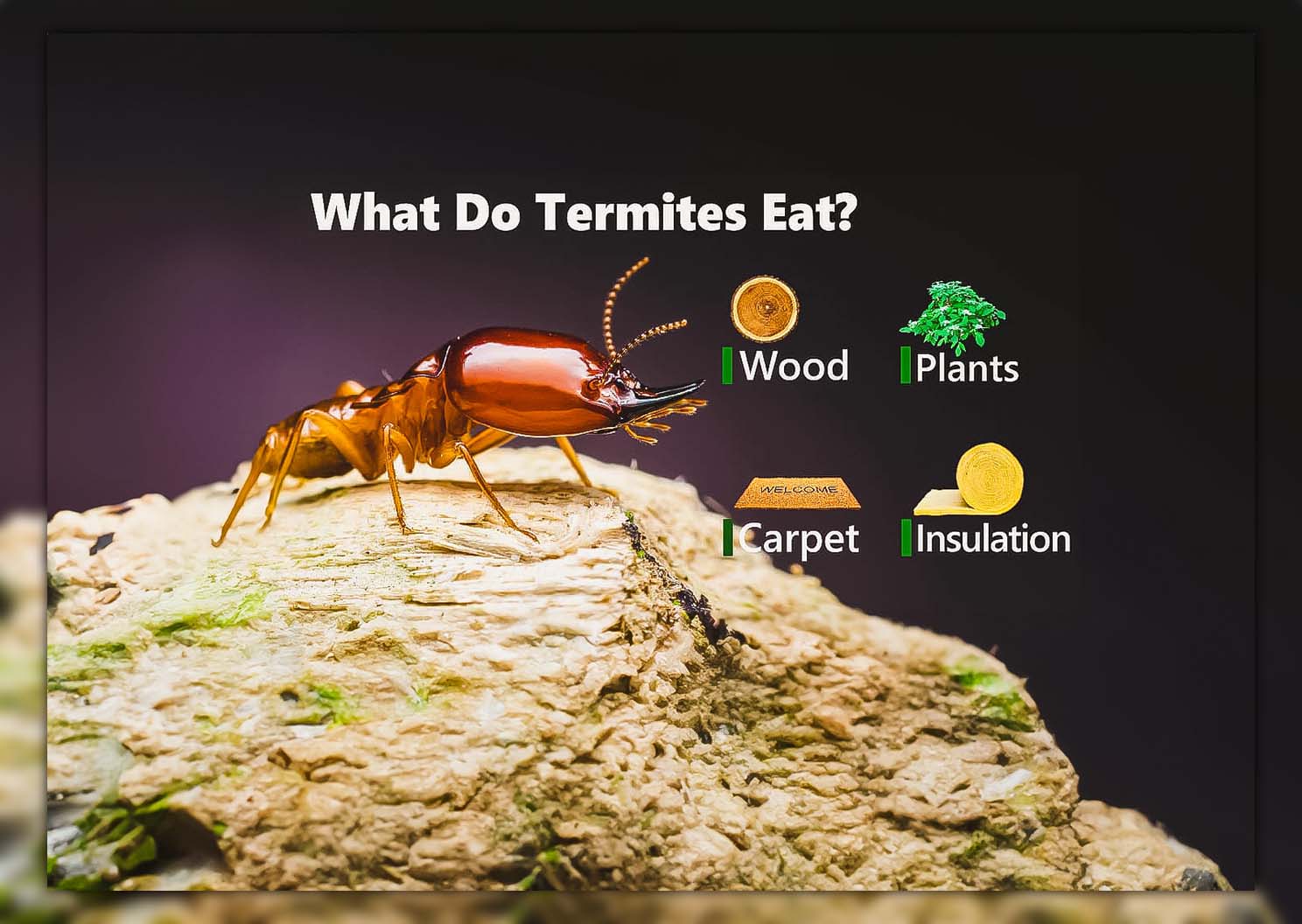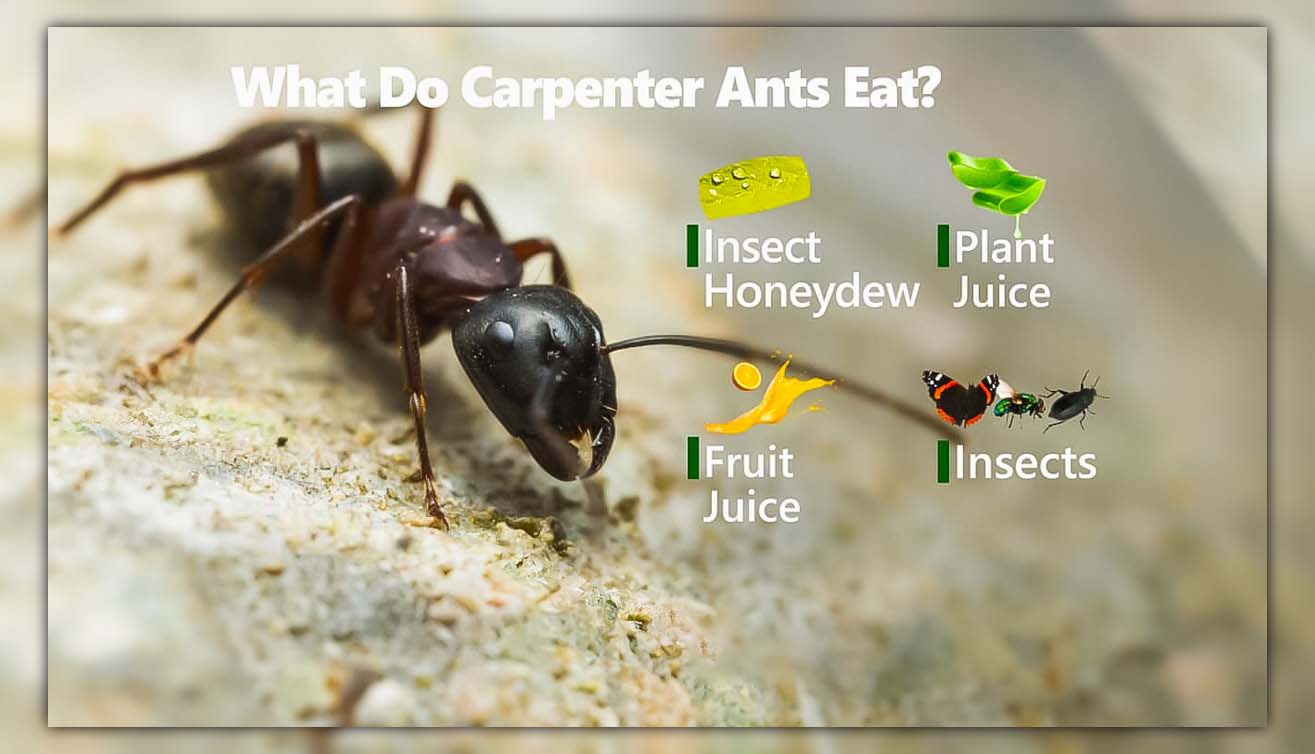Get the facts on Carpenter ant vs termite damage and learn how to identify and tackle these common household pests effectively.
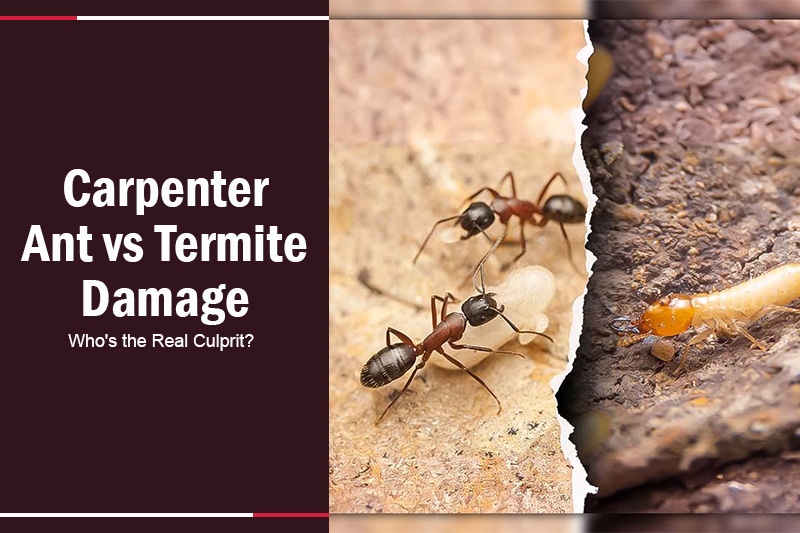
Carpenter Ant vs Termite Damage
Carpenter ants and termites are both pests, but they damage wood in different ways. Carpenter ants make very clean and smooth tunnels and spaces.
These look tidy and well-made. On the other hand, termite tunnels and spaces are rough and messy, often filled with mud. You can sometimes see termite mud tunnels on the outside walls or foundations of houses. Knowing the carpenter ant damage vs termite damage can help you identify which pest you’re dealing with.
Termites are often called “silent destroyers” because they can eat through wood, floors, and even wallpaper without being noticed. Carpenter ants can also damage wood quietly, but they usually take longer to cause big problems. Every year, termites cause about $500 billion in damage worldwide. This shows why it’s important to catch these pests early.
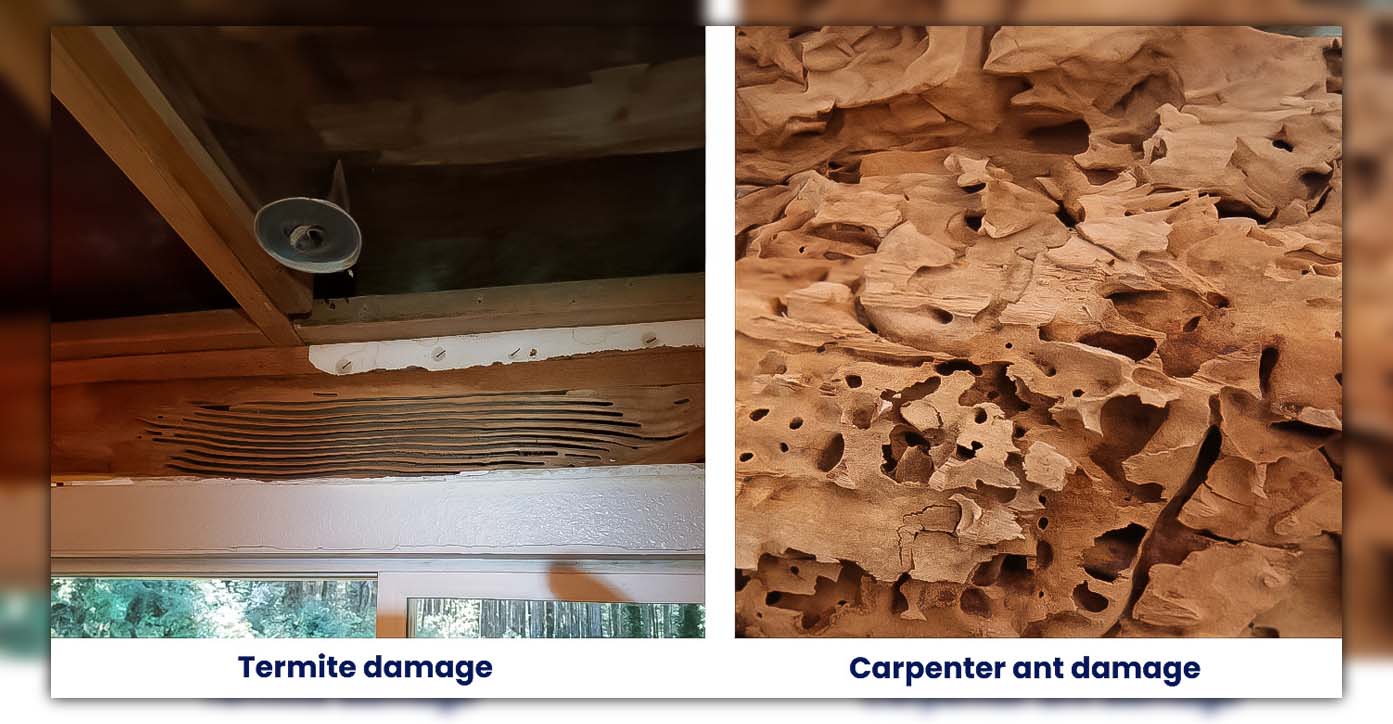
Bodies of Carpenter Ants and Termites
Let’s dive into some interesting facts about termites and carpenter ants, particularly focusing on their physical differences. A key distinction lies in their body structure. Termites have two main body parts: a head and a thorax.
In contrast, ants have three: a head, thorax, and abdomen. This difference is quite noticeable when you compare them side by side. Additionally, termites have notably long wings, typically twice the length of their body. Ant wings, however, are just a bit longer than their bodies.
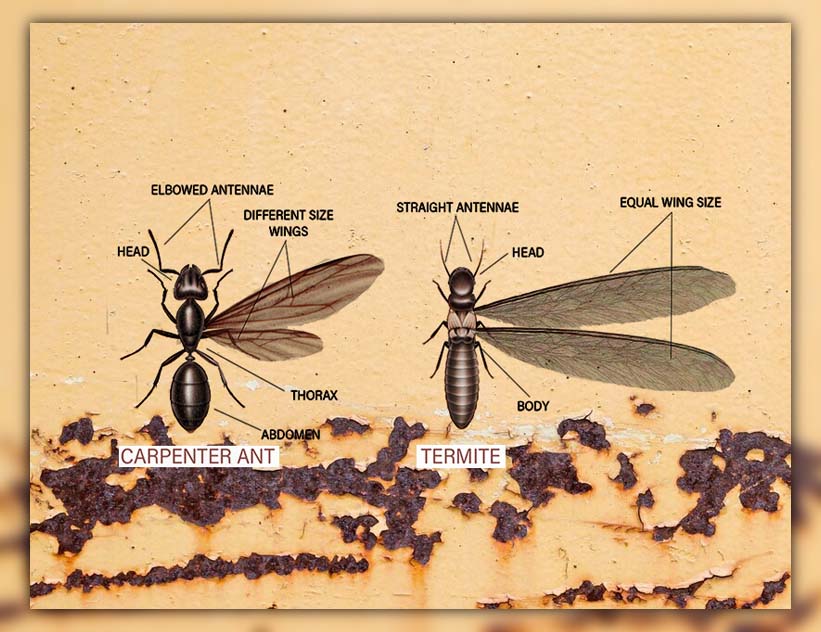
For homeowners who think they might have a pest problem but aren’t sure whether it’s termites or carpenter ants, a practical tip is to catch one of the insects and take it to a local pest control company for identification.
Regardless of which pest you’re dealing with, experts in residential pest control strongly recommend taking quick action. This helps to reduce damage and control the infestation effectively and swiftly.
Diet of Carpenter Ants and Termites
Both termites and carpenter ants can cause damage to the wood in your house, but they do it for different reasons.
Termites actually eat wood because they can digest the cellulose in it, which gives them nutrition.
Carpenter ants don’t eat wood. Instead, they make holes and tunnels in wood to build their nests.
When thinking about pest control, remember that both termites and ants need water to survive. They do well in damp places. Carpenter ants can’t eat dry food; they need moisture to soften their food.
To help keep these pests away, it’s a good idea to fix any water leaks and drainage problems in your house, like dripping taps or areas where water doesn’t drain well. This can help reduce the chances of them setting up home in your space.
Behaviors of Termites and Carpenter Ants
Termites and carpenter ants both damage wood, but they do so in different ways.
Carpenter Ants
- They start their nests in wood that’s already rotting and then move into healthier wood, as well as insulation and spaces within walls.
- The tunnels they carve in wood look smooth, almost like they’ve been polished with sandpaper.
- Generally, carpenter ants don’t cause as much damage as termites.
Termites
- They can enter a building through areas close to the ground, like basement windows, doors, under sidings, or any part touching the soil.
- A termite colony can be huge, ranging from 60,000 to over a million workers. They can eat about 5 grams of wood each day.
- Termites are a bigger threat than carpenter ants because they can cause a lot more damage in a much shorter time.
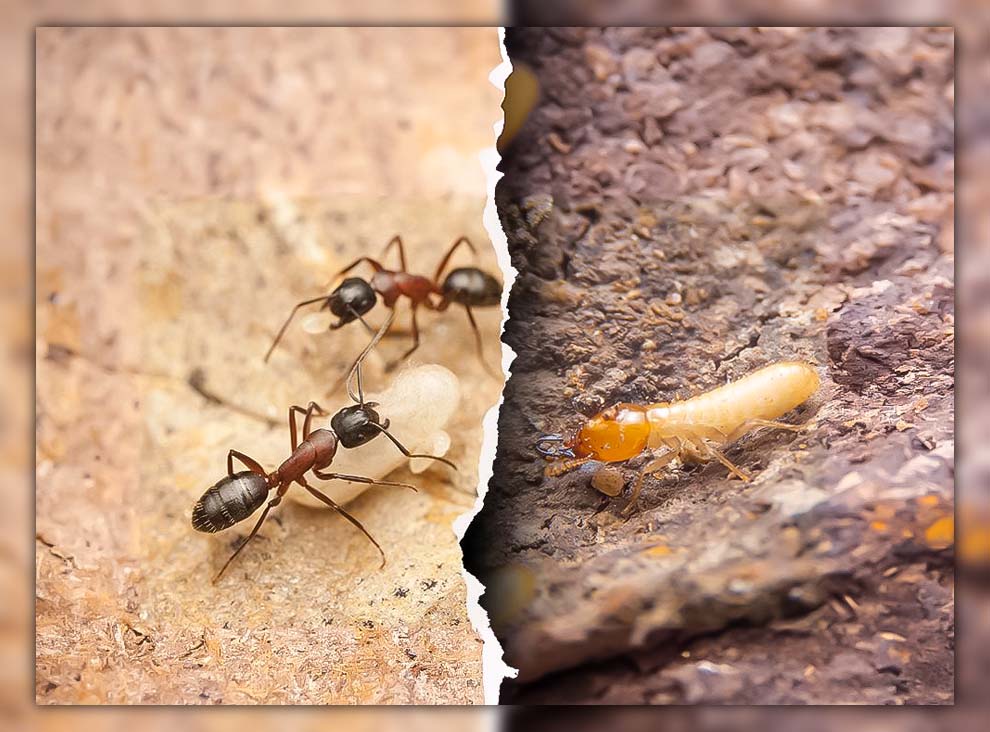
Comparison of Carpenter Ant Nests and Termite Nests
Both termites and carpenter ants can live in the wood of your home, but they choose different types of wood and locations.
Carpenter Ants
- These ants build their homes in various wood sources like tree stumps, fence posts, firewood, or landscaping.
- They are particularly drawn to wood that is moist or has been previously damaged.
- Inside homes, they often settle in places like window and door frames that are damaged, crawl spaces, near roofs, chimneys, and areas around sinks and bathtubs.
Termites
- Termites come in different types and enter homes in their own ways.
- Subterranean termites, which live in large underground colonies of up to two million, create “mud tubes” to travel to food sources like your house. These tubes also protect them from the air.
- Dampwood termites prefer wet wood and are typically found in logs, stumps, dead trees, fence posts, and utility poles.
- Drywood termites target dry wood, such as the wood in attic framings.
Conclusion
To wrap up, the battle of “Carpenter ant vs termite damage” in homes is a topic of great importance.
For more valuable insights and helpful tips on dealing with these and other pests, don’t forget to check out our other blogs at Pestweek.

Calina Mabel has over 15 years of experience in the field of journalism and communications. Currently, Calina Mabel is the Content Writer for categories such as Cockroach, Ants, Bed Bugs, Mosquito, Rodent, Termite, and Flies on Pestweek.com. She aims to build content for these categories with a focus on providing valuable and accessible information to readers, in order to create the world’s largest knowledge community about Pests.
All content written by Calina Mabel has been reviewed by Emily Carter.


